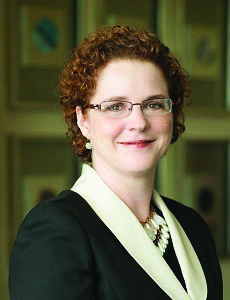Going Above and Beyond the CMS Hospital Price Transparency Rule
The new hospital price transparency rule only scratches the surface of consumer-friendly financial practices, so hospitals are creating tools to give patients the data they need to make care decisions.

Source: Getty Images
- As of January 1, 2019, a new CMS hospital price transparency rule requires all hospitals in the US to publicize what was once considered heavily guarded material: their chargemasters.
Chargemasters are lists of all the services and items for which a hospital can bill a patient or a patient’s insurance provider. The list details the costs of every procedure, test, supply, drug, and other service rendered at the hospital, as well as any fees associated with care, such as room charges.
Only uninsured patients and individuals who choose to pay in cash for their care typically access the details of a hospital’s chargemaster. Otherwise, hospitals consider their chargemaster a trade secret used primarily for negotiating more favorable rates with private payers, and state laws and courts have tended to agree that the information is proprietary.
However, CMS is pulling back the veil on hospital chargemasters in an effort to increase price transparency for consumers. The federal agency now requires hospitals to publish their chargemasters in a machine-readable format on their websites to empower patients.
“As people are paying more for their healthcare, they’re demanding more. They want quality and price transparency. This is just a response to the needs of patients,” CMS Administrator Seema Verma said in an exclusive HealthItAnalytics.com interview after CMS proposed the requirement in 2018.
“If you’re buying a car or pretty much anything else, you’re able to do some research,” she remarked. “You’re able to know what the quality is. You’re able to make comparisons. Why shouldn’t we be able to do that in healthcare? Every healthcare consumer wants that.”
Giving patients access to hospital chargemasters is an important first step to address consumerism in healthcare and rising patient financial responsibility rates.
But some hospitals are more on board with chargemaster transparency than others. Critics of the rule argue patients need more than hospital charges to make cost-conscious decisions. Patients need to know how much of that charge they will be expected to pay. In other words, they need accurate, tailored out-of-pocket cost estimates.
CMS acknowledges the shortcomings of publicizing just chargemaster data. However, the agency sees the requirement as the entry point to effective price transparency, and ultimately to lower costs.
Using hospital chargemasters, hospitals can take the first step towards price transparency that is meaningful to patients and develop tools that give patients more than just charges.
But by building off the requirement to offer tailored insights to patients, hospitals will be able to compete and thrive in an industry aligning more and more with consumerism.
“Just the Beginning” of Healthcare Price Transparency, Verma Says
Price Transparency Crucial to Healthcare Consumerism Success
The complexities of determining hospital costs
On the surface, hospital price transparency seems like a simple task. Facilities should release their prices to the public, much like retail stores do, and consumers should be able to make apples-to-apples comparisons when shopping for the best deal.
But no matter how much stakeholders try to compare healthcare with retail shopping, purchasing medical services is still dramatically different.
Actual care costs for a hospital stay or service depend on many factors, such as wages, labor, medical instrument use, and other supply and utility expenses, the American Hospital Association (AHA) explained.
Hospitals may be able to use internal data to forecast the costs of standard input factors and account for those values in their prices. However, patient characteristics can also significantly sway costs. Providers have less control over how a patient’s comorbidities or unique circumstances will influence total costs of care.
Providers may also have trouble estimating how a patient’s condition and characteristics will be billed after their discharge.
“Price transparency for inpatient services is extremely difficult just because of the complexity of the case,” Francine Botek, Senior VP of Finance at St. Luke’s University Health Network, recently explained to RevCycleIntelligence.com.

Francine Botek, Senior VP of Finance, St. Luke’s University Health Network
Source: St. Luke’s University Health Network“Even with a chargemaster, it is virtually impossible to determine ahead of time what that patient will require. Most billing platforms are on a DRG [diagnostic related group] basis, and how that case is going to be categorized into a DRG is going to then determine the costs. But that's not determined until the patient is discharged.”
Adding to the complexity of determining hospital costs are facility and professional fees. When patients undergo care in a hospital or hospital-owned office, they receive separate bills for the use of the facility and the provider’s fees.
As hospitals and health systems grow through mergers and acquisitions, price transparency has become more difficult to achieve.
“The reason for hospital price transparency being more complicated, and this is not unique to our health system, is the use of a variety of physician groups,” said Melissa Greer, VP of Revenue Cycle at UCHealth in Colorado. “Each group has their own contracts, and they all have their own fee schedules. That's tricky.”
“For example, a lot of the radiologists in our system are independent radiologists. Price transparency is going to be more difficult for them and I can't guarantee that we will be able to provide estimates for every single one of those providers.”
Price transparency may be a challenge. But effective hospital price transparency that leads to lower-cost care hinges on hospitals doing more than just complying with the new CMS rule.
Fortunately, some hospitals are paving the way by overcoming hospital cost obstacles and delivering out-of-pocket cost estimates to patients.
WA Makes Healthcare Price Transparency Consumer-Friendly
Accounting for the Patient in the Healthcare Revenue Cycle
Going beyond price transparency rule compliance
When introducing the new rule, CMS recognized UCHealth as a hospital going above and beyond the basics of the hospital price transparency requirement. In addition to a call center staffed with financial counselors, the non-profit network of ten hospitals and over 150 clinics also recently started to offer out-of-pocket cost estimates through its patient portal.
“We use the tool as a patient self-service option, so a patient can go directly onto the website and use the tool themselves or they can call,” Greer explained. “If they need any assistance walking through the tool or have a more complicated service that they'd like to know about, they can call in.”
UCHealth launched the price estimate function in August 2018 and became one of the nation’s first health systems to offer individualized price estimates that are specific to a patient’s insurance situation via an online patient portal, mobile app, and call center.
To use the online cost estimator, existing patients can log in to the patient portal or new patients can create an account. Inside the patient portal, consumers can input a CPT code that was provided by a hospital or clinic or select a category to see a list of available services.
The portal pulls up existing insurance information for patients. New patients can input their health plan details.
Behind the scenes, the tool is calculating the six-month historical median cost for the selected service. At the same time, the system is gathering real-time information about the patient’s insurance benefits. Finally, the system applies the contractual discount for the specific payer.
“In the end, the patient is quoted what they can expect to pay for the service,” Greer said.
The health system anticipates that use of the online cost estimate tool will eclipse the use of the dedicated call center. Consumers are demanding more options for self-service interactions, explained Greer, and the portal offers the convenience they are looking for.
“Ideally, the online platform would be so robust that patients would really only need to call the call center in circumstances where they actually want to speak with someone. They are only likely to call a representative if they want financial counseling or they have questions about insurance or exchanges,” she stated.
Allowing patients to access personalized out-of-pocket cost estimates seems to be the path innovative hospitals are taking to go beyond chargemaster transparency.
Like UCHealth, Indiana University Health (IU Health) also recently launched out-of-pocket cost estimate tools on their website.
“IU Health’s cost estimator service is very comprehensive,” the system’s Senior VP and Chief Financial Officer Jenni Alvey explained. “Patients may request an estimate in a way that is convenient for them – online, by phone, or via email.”

Jenni Alvey,Senior VP and CFO, Indiana University Health
Source: Indiana University Health“By providing information regarding a patient’s scheduled care and insurance, IU Health provides a patient with an estimate of their actual out-of-pocket cost, taking into consideration all charges associated with their individually designed care, including the facility- and provider-related charges specific to the actual provider and location of service and any identified lab and radiology services.”
At St. Luke’s in Pennsylvania, patients can use a similar process, selecting a procedure from a list of CPT codes and service descriptions, then inputting their insurance plan information to determine out-of-pocket costs.
But Botek’s organization has taken the strategy a step further by offering patients a guaranteed pre-insurance price.
Many hospitals offer patients a discounted price for common, scheduled procedures if the patient can pay ahead. Prepayment discounts reduce the risk of a hospital bill not being paid in full, so hospitals are increasingly offering price cuts as patient financial responsibility rises.
St. Luke’s wanted to make their patients more aware of possible prepayment discounts by publicizing the information on its price estimate webpage.
“The tool provides patients with a side-by-side option to pay a guaranteed bundled price in advance of the service through what we call Price Lock,” Botek explained.
“For example, an MRI is somewhere in the neighborhood of five or six hundred dollars. That is inclusive of the radiologist fee. A patient can see the side-by-side pricing to determine whether they want to go the route of going through their insurance or paying this advanced bundled price.”
For the growing number of individuals with high deductible health insurance plans, an out-of-pocket prepayment may actually end up costing them less.
With the online tools, the hospitals and health systems are finding their patients engaging more with their clinical and financial experiences.
4 Hospital Business Models for Consumer-Centric Healthcare
How to Adopt a Retail Approach to Boost Healthcare Transparency
Developing price transparency tools with existing resources
Creating online price estimation systems and webpages can significantly improve the patient experience. But as reimbursement rates decline and operating costs rise, implementing new revenue cycle management technology may not be in the budget for some hospitals.
Fortunately, innovative hospitals have found that existing health IT systems can jumpstart the journey to meaningful healthcare price transparency for patients.
UCHealth was one of those innovative hospitals. The system partnered with its EHR vendor to develop a hospital price transparency tool that would identify and distribute cost information that was meaningful to patients.
“It makes a lot of sense for the tool to be built within the electronic health record,” Greer said. “That's where all the historical data is held, all client data, and hopefully all contract information.”
A partnership with an EHR vendor should be a starting point for healthcare price transparency, she advised.
“Our EHR is from Epic Systems. The company has been working on cost estimator tools, but there has been relatively slow buy-in on the hospital side. They've been looking for a partner who was willing to go all in with price transparency,” she said.
“We're using the self-service tool more than any other system in the country right now,” she continued. “We've been able to give them a whole bunch of feedback. It all sounds good but when patients start to use the tools, simple things pop up like how we sort data so people can find it easily, how can people benefit from a common procedures tab on the site, and just the look and feel of the tool and how to navigate it. Epic has been a partner and they've been responsive as we've identified ways to optimize.”
IU Health also developed a price estimate webpage on its website using existing resources.
“It is an internally built tool. Individual patient experience is an important consideration in the way we develop our services,” explained Alvery. “In response to patient feedback, we created a patient estimates team in 2015 to provide individualized, comprehensive patient cost estimates.”
Using internal resources helped the Indiana health system incorporate all the possible charges for a specific procedure, she added.
“IU Health provides estimates for all services for which IU Health bills via our consolidated billing and patient statement process,” she said. “IU Health’s cost estimates are comprehensive, including facility-specific charges, physician charges, and related lab and diagnostic/radiology services. Our estimates team works closely with clinical teams to ensure this information is complete and represents all of the services related to a patient’s care.”
For St. Luke’s, a development partner helped bring an internal project to completion.
St. Luke’s University Health Network started developing its own price estimate tool, called “Price Checker,” using internal resources. But the ability to give patients a guaranteed bundled price, as well as post-insurance estimates, proved to be challenging.
“At first, we were doing this on different platforms,” Botek said. “When we first developed the Price Checker, it was just the option for a patient to go online and look at guaranteed prices that included physician and hospital fees. At that point, they had to call if they wanted to find out what their insurance was going to pay.”
St. Luke’s partnered with health IT company Simplee to give patients a side-by-side cost comparison. The vendor worked with St. Luke’s to create a tool that pulled information from the patient accounting system, verified insurance coverage and benefits, and presented the resulting out-of-pocket cost calculation in a user-friendly manner.
What came from that partnership was the side-by-side cost comparison, which Botek says helps patients find the most affordable option for them.
Implementing effective price transparency to boost the bottom line
The healthcare industry is barreling toward price transparency. For now, hospitals have to at least comply with posting their chargemasters online.
But taking the extra step before CMS requires further action can actually benefit the organization and its bottom line.
Critics of the new requirement have argued that revealing chargemaster prices to patients has the potential to push customers away, especially if the neighboring hospital can deliver the same service at a lower cost. Initiatives that lead to fewer patients can drastically diminish ROI and the business case for implementation.
However, hospitals cannot deny that consumers are purchasing healthcare differently than they have in the past. High-deductible health plans and other cost-sharing arrangements are making consumers more responsible for their healthcare costs. As a result, hospitals are relying on patients more than ever as a revenue source.
With more skin in the game, consumers are demanding price transparency from their providers. They want to receive the highest quality care at the lowest cost and hospitals should be working to meet new consumer demands to survive in the changing market.
Offering hospital price transparency tools that give out-of-pocket cost estimates is one way hospitals can set themselves apart from their peers.
“As hospitals shy away and look at putting their chargemasters on their websites as an onerous task, we welcome the CMS mandate because we feel very strongly about patients having access to the appropriate tools to provide them with how much their healthcare will cost,” Botek said.
“We also feel that we offer an extremely affordable option,” she added. “We have enough information to understand that we are within our competitive arena, and we offer patients the most affordable price.”
Greer agreed that healthcare price transparency is an overall advantage, even when UCHealth’s prices are higher than their competitors.
“We would rather be transparent and have patients know what to expect and make a decision to opt in even if that meant losing a patient in the case where we might be more expensive than someone else,” she emphasized.
There may be winners and losers with hospital price transparency when it comes to specific services, but hospitals will need to take those variations in stride.
Hospital price transparency is a top priority for the federal government, and CMS has indicated that it will continue to use its regulatory authority to promote transparency.
Hospitals have the choice to meet today’s bare minimum by publishing their chargemasters - or they could rise to the challenge of healthcare consumerism. Offering patients enhanced, data-driven price transparency services will prepare hospital for future regulations and the new reality involving greater overall patient financial responsibility.
4 Strategies for Providers to Improve Hospital Price Transparency
Refining Price Transparency Tools to Increase Patient Use, Cut Costs
